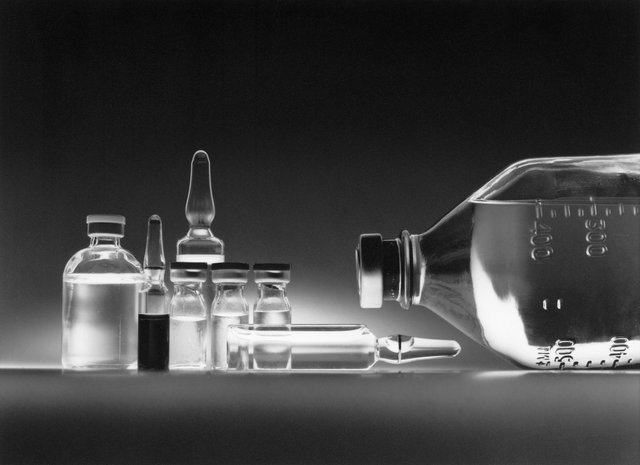Why ethanol can be used for a low-cost cancer treatment in developing countries
Have you ever wondered how cancer is treated in developing countries, where not everyone has access to electricity or clean water? Honestly, until recently it did not cross my mind. But now that I more aware of this big issue, I want to share it with you.
Usually, in higher developed countries cancer can be treated by surgery or radiation therapy and the outcomes are often very successful. In contrast, less developed countries often don’t have access to constant electricity, expensive drugs or qualified personnel (doctors) and appropriate equipment (Kingham et al., 2013). This is reflected in the distinctly higher mortality-to-incidence rates in less developed countries, compared to developed ones (Ferlay et al., 2015).
It is also shocking to see that 9 out of 10 people in less developed countries do not get basic surgical care (Meara et al., 2015).
Due to these reasons, new cancer therapies for developing countries have to be developed that can replace commonly used treatments such as surgery or chemotherapy.
An alternative treatment needs to have following characteristics: “The ideal therapy for low-resource settings should be highly effective at treating localized lesions, portable, ultra-low-cost, and not depend on regular access to electricity” (Morhard et al., 2017).
One alternative to surgery that has shown to be promising is tumour ablation (destruction of tumour cells using extreme temperatures). Microwave ablation (Martin et al., 2010) and radiofrequency ablation (Gervais et al., 2005) were demonstrated to treat certain cancers quite successfully. However, their major drawback is the constant access to electricity, which is often not given.
A different method (cold coagulation) uses a heated probe to destroy tumours (Duncan, 1983). Although it is portable and not too expensive, one major disadvantage is the treatment of only superficial lesions (Duncan, 2014).
Moreover, cryotherapy is often used to freeze malignant tumours which thereby causes necrosis. The main drawback here is that the device is not easily portable and specific equipment is required (Tsu et al., 2013).
Ethanol ablation, as the name already suggests, uses ethanol to destroy cancer cells. What makes this special is that is has all the above mentioned characteristics. Ethanol is directly injected into the tumour. There it causes the denaturation of proteins and dehydration of the cytoplasm (Suigura et al., 1983*), thus inducing necrosis. It is often used to treat liver tumours (quite successfully), but also other cancer types can be treated (Ryu et al., 1997).
The really wonderful thing about ethanol ablation are its super low costs (< 5$ per treatment). Additionally, no special equipment is required and it is portable (Kuang et al., 2009; (Heilo et al., 2011).
Although ethanol ablation has many benefits, one might ask about potential drawbacks. The main disadvantage is its reduced efficiency in treating non-capsulated tumours, so tumours that lack a fibrous capsule (Kuang et al., 2009). Consequently, the ethanol is not retained within the tumour and washed out.
Recently, a paper was published in the journal Nature that demonstrated how the efficiency of ethanol ablation in treating such cancers could be increased (Morhard et al., 2017).
The researchers could solve this problem by adding ethyl cellulose to the ethanol solution. The main feature of ethyl cellulose (a derivative of cellulose) is its water-insolubility while being soluble in ethanol. Thereby it increases the viscosity of the solution thus facilitating the retaining of the mixture in the tumour. Furthermore, an ethanol-based gel phase is formed which additionally increases the retaining of the ethanol at the injection site. Thus, less ethanol is cleared.
Ethyl cellulose

Source
Morhard and colleagues tested this mixture consisting of ethanol and ethyl cellulose in epithelial tumours in hamsters. The solution was directly injected into the tumour and quite fascinatingly it could induce complete regression in all tumour samples. In contrast, injections of pure ethanol only induced regression in one third of the cancers.
In summary, it clearly shows that ethanol combined with ethyl cellulose can be used to treat certain cancers. Furthermore, due to its low costs and easy handling, this treatment represents a good alternative to surgery and other methods that can be used in developing countries.
What are your thoughts about this topic? Do you think this can be a good alternative?
*Reference: Sugiura N, Takara K, Ohto M, Okuda K, Hirooka N. Percutaneous intratumoral injection of ethanol under ultrasound imaging for treatment od small heptocellular carcinoma. Acta Hepatol Jpn (1983) 24:1920.

Being A SteemStem Member
Oh wow, I saw the article title and came in fully prepared to debunk stuff along the lines of homeopathic/'natural' cures claims.
Instead, I see a well reasoned, well-sourced article on a neat technique about which I was completely unaware, great job!
Thank you @effofex! It was also exciting for me to see how efficient this technique was. Never thought that the ethanol could actually "cure" certain types of cancers, but it works!